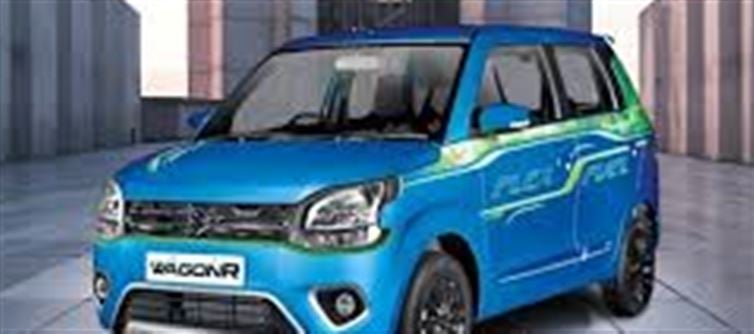
In a significant move toward sustainability and reducing carbon emissions, Maruti Suzuki is all set to introduce India’s first flex-fuel car, a revolutionary vehicle that can run on a mix of petrol and bioethanol (ranging from E20 to E95) by 2026. This move is in line with the country’s goal to promote green mobility and reduce dependence on fossil fuels.
Here’s everything you need to know about this exciting development:
1. What is a Flex-Fuel Car?
A flex-fuel vehicle (FFV) is a car that is capable of running on more than one type of fuel. In this case, maruti Suzuki’s upcoming car will run on a combination of petrol and bioethanol.
· E20: 20% ethanol and 80% petrol
· E95: 95% ethanol and 5% petrol
The flexibility of using varying ethanol blends makes these vehicles environmentally friendly, as bioethanol is a renewable and sustainable resource derived from plant-based materials.
2. Maruti’s Step Toward Green Mobility
This is a groundbreaking step by Maruti Suzuki, as they will be the first automaker in india to introduce a flex-fuel vehicle. By switching to bioethanol, which produces fewer carbon emissions compared to conventional petrol, this move aligns with the indian government’s commitment to reducing carbon footprints and promoting eco-friendly transportation solutions.
3. Benefits of Flex-Fuel Cars:
Reduced Carbon Emissions:
· Bioethanol emits fewer greenhouse gases compared to petrol. By promoting flex-fuel cars, india can contribute to lowering air pollution and improving environmental health.
Energy Independence:
· By using bioethanol, india can reduce its dependence on imported crude oil, making the country more energy independent and ensuring energy security.
Sustainability:
· Bioethanol is produced from agricultural waste and renewable crops like sugarcane and maize, making it a more sustainable option than fossil fuels. It supports farmers and local industries.
Cost-Effective:
· Ethanol, being produced locally, could be a more affordable alternative to petrol. This might result in lower fuel costs for consumers in the long run.
4. Key Features of the maruti Suzuki Flex-Fuel Car:
· Fuel Compatibility: The car will be capable of running on varying ethanol blends, offering flexibility depending on the ethanol availability.
· Improved Fuel Efficiency: Bioethanol has a higher octane rating, which can enhance the performance and efficiency of the engine, potentially improving fuel economy in the process.
· Eco-Friendly: With a focus on green technology, this vehicle will significantly reduce emissions compared to conventional cars running purely on petrol.
· Affordable and Practical: maruti Suzuki’s goal is to make this new flex-fuel vehicle accessible to the mass market, ensuring that it remains affordable for the average consumer.
5. Launch Timeline:
Maruti Suzuki plans to roll out this game-changing vehicle by 2026, setting the stage for a shift in the automotive industry toward more sustainable mobility solutions. The launch is expected to be a major milestone in India’s push to adopt flex-fuel vehicles, in line with the government's push for ethanol blending in petrol.
6. India's Bioethanol Push:
The indian government has been working towards increasing the ethanol blending percentage in petrol, with the target to achieve 20% ethanol blending in petrol (E20) by 2025. maruti Suzuki’s move to launch a flex-fuel car aligns perfectly with these national goals.
The introduction of flex-fuel vehicles can also encourage more ethanol production in india, leading to better agriculture output, job creation, and a cleaner environment.
Conclusion:
Maruti Suzuki’s upcoming flex-fuel car is a revolutionary step toward green mobility in India. It’s set to address the pressing issues of environmental degradation and energy security, while also promoting the use of renewable energy. As india continues to embrace sustainable technologies, Maruti’s initiative will pave the way for more eco-conscious transportation options, making it easier for consumers to transition to cleaner, greener alternatives.
This vehicle promises to offer an exciting blend of performance, economy, and environmental benefits, all while playing a significant r
Disclaimer:
The views and opinions expressed in this article are those of the author and do not necessarily reflect the official policy or position of any agency, organization, employer, or company. All information provided is for general informational purposes only. While every effort has been made to ensure accuracy, we make no representations or warranties of any kind, express or implied, about the completeness, reliability, or suitability of the information contained herein. Readers are advised to verify facts and seek professional advice where necessary. Any reliance placed on such information is strictly at the reader’s own risk..jpg)




 click and follow Indiaherald WhatsApp channel
click and follow Indiaherald WhatsApp channel